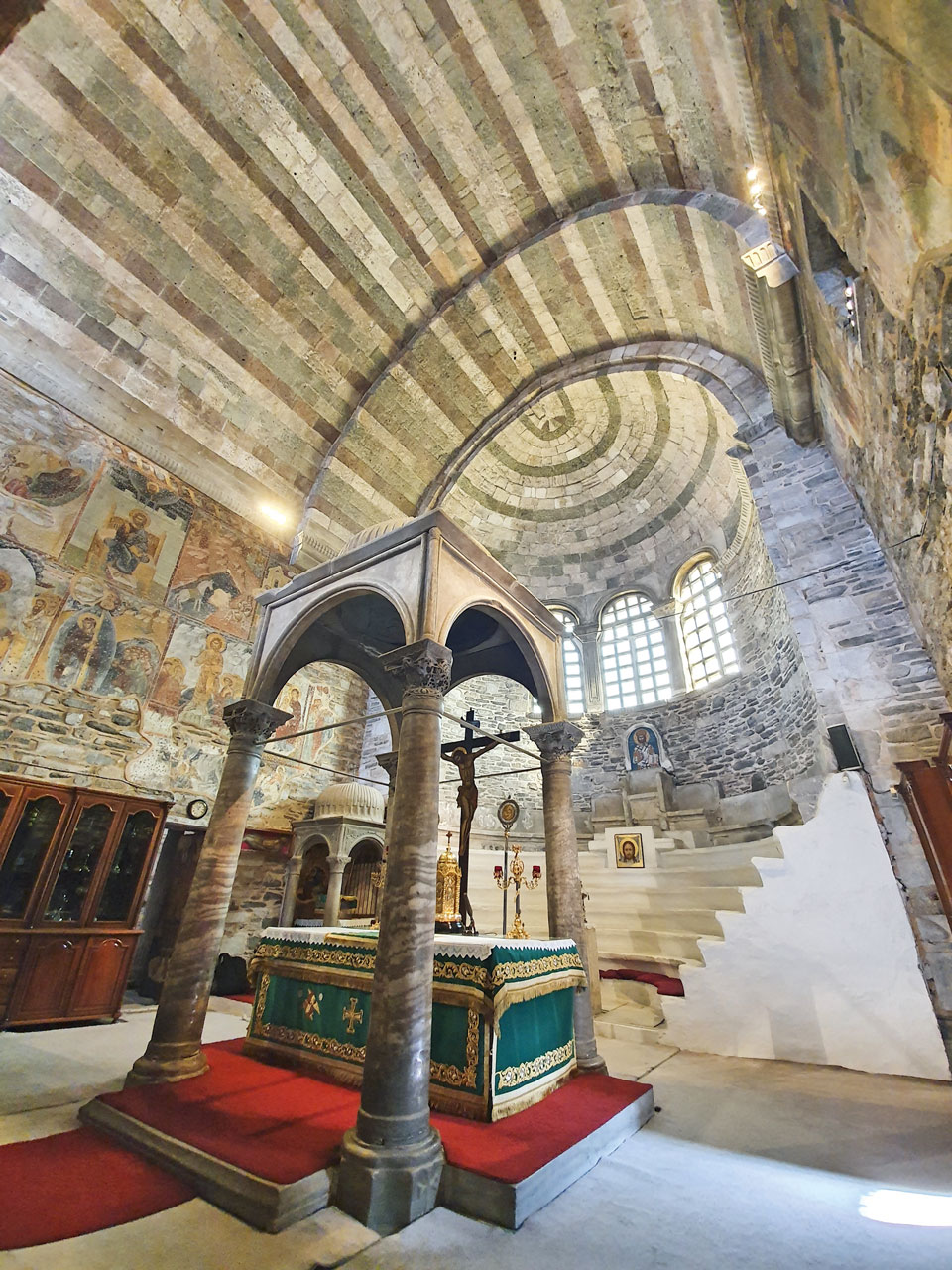
Those who happened to be at Panagia Ekatontapyliani in Paros this summer probably stood in awe in front of the well-preserved church, most of which dates back to the time of Justinian. But it seems that the general admiration must turn to another period of Byzantium: according to the findings of a study by a group of Greek archaeologists, presented today at the 24th International Congress of Byzantine Studies in Venice, the dating of Ekatontapiliani must be radically revised. almost rewriting the history of the Cyclades.
“Until today, Ekatontapyliani is considered an impressive 6th-century AD building,” says Cyclades commissioner Dimitris Atanasoulis, who studied the monument with architect Sotiris Vogiatsis and archaeologist Vasiliki Sitiakaki. “But after our six years of research, we believe that it should be dated to the end of the 7th or, more likely, the first half of the 8th century AD. and to be “transferred” from the proto-Byzantine era to what the Byzantines call the “transitional ages” and in which there is a transition from late antiquity to the medieval world.”
The monument, considered to be an early Byzantine building, is now dated closer to the Middle Ages.
The study of the monument, last scrutinized in the 60s by Anastasios Orlandos (whose extensive intervention, according to Athanasoulis, stalled efforts to decipher the stages of Ekatontapiliani’s construction for decades), turned in principle to a new approach to its visible features in a combined way: for example, the dome of a large church with a semicircular drum, the complex architecture of the chapel of St. Nicholas, the hewn stone vault, his sculptures and frescoes – all this supports the new dating of the monument. . An entirely new element also emerged from excavations by the temple foundation group, which unearthed pottery objects also dated to the early 8th century AD.

“If you place it in the time of Justinian, during the heyday of the Byzantine Empire, Ekatontapyliani is the ‘expected’ monument,” says Dimitris Afanasoulis. “However,” he adds, “with its transfer to the transitional ages, the idea that we had about the Cyclades and the Aegean of that period is turned over and their strategic importance is proved.” In the 7th century AD, the Arabs launch an attack on the Empire and occupy the Middle East, while at the same time launching naval raids on Constantinople from the Aegean. Judging by the new data, it turns out that the Empire then not only does not abandon the Cyclades, but also considers them a vital space for its survival. “New, important castles and churches are being built, the highest creation of which is Ekatontapiliani,” continues Mr. Afanasoulis, “associated with control of the sea routes to Constantinople. The same results of the surveys we carried out on other islands, where we also identified buildings from the 7th and 8th centuries AD. – for example, in Naxos, Amorgos, Ios.
The announcement of the Greek archaeologists at the conference will be followed by a corresponding extended monograph, as well as additional announcements for the rest of the Cyclades.
Source: Kathimerini
James Springer is a renowned author and opinion writer, known for his bold and thought-provoking articles on a wide range of topics. He currently works as a writer at 247 news reel, where he uses his unique voice and sharp wit to offer fresh perspectives on current events. His articles are widely read and shared and has earned him a reputation as a talented and insightful writer.